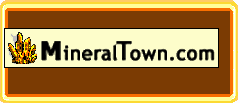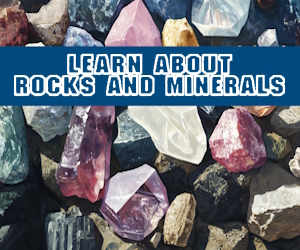
English | Catalŕ | Castellano
Mohs scale of mineral hardness
The scale goes from 1 to 10. Diamond is at the top of the scale, with a rating of 10, Talc is the softest, with a rating of 1

Minerals Identification: Mohs scale of mineral hardness

Friedrich Mohs (1773-1839)
German geologist/mineralogist.
Mohs, studied chemistry, mathematics and physics. He started classifying minerals by their physical characteristics, in spite of their chemical composition, as it was done before. He created a hardness scale that is still used as Mohs scale of mineral hardness.
MOHS SCALE OF MINERAL HARDNESS | |||
| Hardness | Mineral | Everyday equivalent | |
10 |
Diamond |
synthetic diamond | |
9 |
Corundum |
ruby | |
8 |
Topaz |
sandpaper | |
7 |
Quartz |
steel knife | |
6 |
Orthoclase / Feldspar |
penknife blade | |
5 |
Apatite |
glass | |
4 |
Fluorite |
iron nail | |
3 |
Calcite |
bronze coin | |
2 |
Gypsum |
fingernail | |
1 |
Talc |
baby powder | |
The scale goes from 1 to 10. Diamond is at the top of the scale, with a rating of 10, Talc is the softest, with a rating of 1. You can use minerals of known hardness to determine the relative hardness of any other mineral. A mineral of a given hardness will scratch a mineral of a lower number. For example one of your fingernail(2) can scratch a talc(1) specimen or with a broken glass(5) you can scratch a calcite(3) or fluorite(4) specimen.
To use the hardness scale, try to scratch the surface of an unknown sample with a mineral or substance from the hardness scale (these are known samples). If the unknown sample cannot be scratched by calcite (3) but it can be scratched by fluorite(4), then it's hardness is between 3 and 4. An example of minerals that have a hardness between 3 and 4 are barite, celestite and cerussite(3 to 3.5). You can use this test to distinguish between calcite and barite or between barite and fluorite.
If you wish to test an unknown mineral for hardness remember that the minerals can be damaged and lose value if not scratched properly.
Some GEMSTONES hardness | ||
Hardness |
Gem | |
10 |
Diamond | |
9 |
Sapphire, Ruby | |
8.5 |
Crysoberyl, Alexandrite, Cats eye | |
7.5 - 8 |
Beryl, Emerald, Aquamarine | |
7.5 |
Zircon | |
7 - 7.5 |
Tourmaline (Elbaite, Dravite) | |
7 |
Quartz (Amethyst, Citrine) | |
6.5 - 7.5 |
Garnet (Hessonite, Rhodolite, Spessartine) | |
Another MINERALS hardness | ||
| Hardness | Minerals | |
9 |
Sapphire | |
7.5 - 8 |
Beryl | |
6.5 - 7 |
Olivine (Peridot), Jade, Spodumene (Kunzite), Epidote, Cassiterite | |
6 - 6.5 |
Iron Pyrite, Rutile, Albite, Prehnite, Benitoite, Epidote, Cassiterite | |
5 - 6 |
Turquoise, Hematite, Augite, Diopside, Moldavite | |
5 - 5.5 |
Goethite, Natrolite, Datolite, Analcime, Wollastonite | |
4.5 - 5 |
Apophyllite, Scheelite | |
4 - 4.5 |
Platinum, Smithsonite, Wolframite | |
3.5 - 4 |
Aragonite, Ankerite, Dolomite, Azurite, Malachite, Sphalerite, Chalcopyrite, Cuprite, Rhodochrosite, Strontianite, Stilbite, Heulandite, Mimetite | |
3 - 3.5 |
Barite, Celestite, Cerussite, Atacamite | |
3 |
Wulfenite, Vanadinite, Bornite | |
2.5 - 3 |
Gold, Silver, Copper, Galena, Anglesite, Mica Phlogopite | |
2.5 |
Micas (Biotite,Lepidolite) | |
2 - 2.5 |
Cinnabar, Amber, Mica Muscovite | |
2 |
Sulfur | |
1.5 - 2 |
Molybdenite | |
1 - 2 |
Aurichalcite | |
Every mineral and gemstone collector should own a nice working scale. With a digital scale, you can evaluate the carat weight of your gemstone. A good working digital scale doesn’t necessarily have to be expensive. Take a look at this gemstone and mineral scale This is a great working, very inexpensive digital scale. Knowing the weight of your gemstones and minerals is very helpful for keeping good records.
Advertising:
barber shop near me, salon near me, barber Coolock, hairdresser coolock, hair extensions, mens hair

